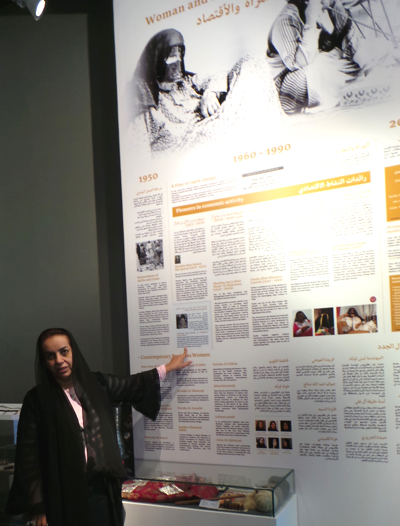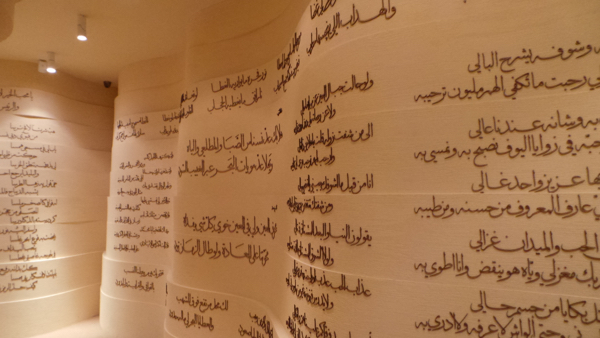Article in brief: A visit to Women’s Museum in Dubai can change many perceptions you may have had on women’s role in the society historically and currently.

I recently visited the Women’s Museum in Dubai and was honored to have a dedicated tour by Professor Rafia Ghubash, the founder of the museum and head curator, and a person I highly admire and respect. Prof. Rafia dedicated three years of her life developing the concept of the museum, researching and gathering the content, after which she worked on renovating and building the museum to what it is today. The museum was built to document the value of women in the UAE, and the important roles they’ve played across generations, in an effort to provide an insight into who our role models are and to break the stereotype that women were idle and didn’t contribute to the society.
The museum is made up of 3 floors. The first floor is divided into 3 sections: “The Memory Of The Place”, “ The Heart of The Place”, and “The Women’s Museum”. This floor includes what the founder has gathered and collected across time, as well as what was gifted to her by people who knew about the museum from their personal valuables, historical pictures of the people who lived in the area, old jewelry sets, tools used at the time, and much more. The different thing about this museum is that Prof. Rafia ensured to document beside every displayed element: who brought the element and their story. She believes in documenting people’s stories so they live on rather than just displaying their belongings.
Then we walked into the “Women’s Museum” section, which shows women’s role economically, politically, sociologically, and in the educational field within our society. By exhibiting a range of examples of those women and what they did in those fields, with a particular focus on stories that date back to the 1890s, the founder proved that women’s definitive roles in contributing to the society is not a new thing in the UAE.
One of the most beautiful things Prof. Rafia told us was that women in the past used to be called by their names followed by their mother’s names rather than their father’s names. For example: Rafia Bint Ousha, Fatma Bint AlZeina; this points as to what value, place, and respect women held in the society. This is unlike the current trend that is spreading among some in our society, where they believe that a women’s name should never be uttered in public. This is one of the things that the museum is trying to correct, because this new trend was never part of our society and culture.
The second floor had a couple of exhibition rooms displaying the artwork of Emirati women as well as the late Sheikh Zayed Al Nahyan’s messages advocating women’s empowerment in the society.
The last floor was dedicated to depict the beautiful poetry collection of Ousha Bint Khalifa AlSuwaidi (also known as The Girl Of The Arabs). This part was beautifully designed in a desert and dunes theme, with selected Arabic poetry verses from Ousha’s collection written in very captivating calligraphy that will keep you enchanted to read more of the poetry and be mesmerized by its beautiful verses. When you enter the room, the verses are actually being dictated as you walk around admiring and taking in the room.

Exploring this museum was a heart-warming and eye-opening experience at the same time, because you could see the love and dedication this place was built with in every detail made to show the value and importance of women’s role across generations in the society. You can read all you want on women empowerment, and attend all the conferences you want, but it’s nothing compared to what you will feel about empowerment whether as a women or a man when you see the past for what it really was and understand that women have empowered themselves all along. It’s a place definitely worth a visit to be lost in its details and history and all the stories it tells.




1 Comment